What is a kilt? The Tradition of Scotland is Going Viral Worldwide
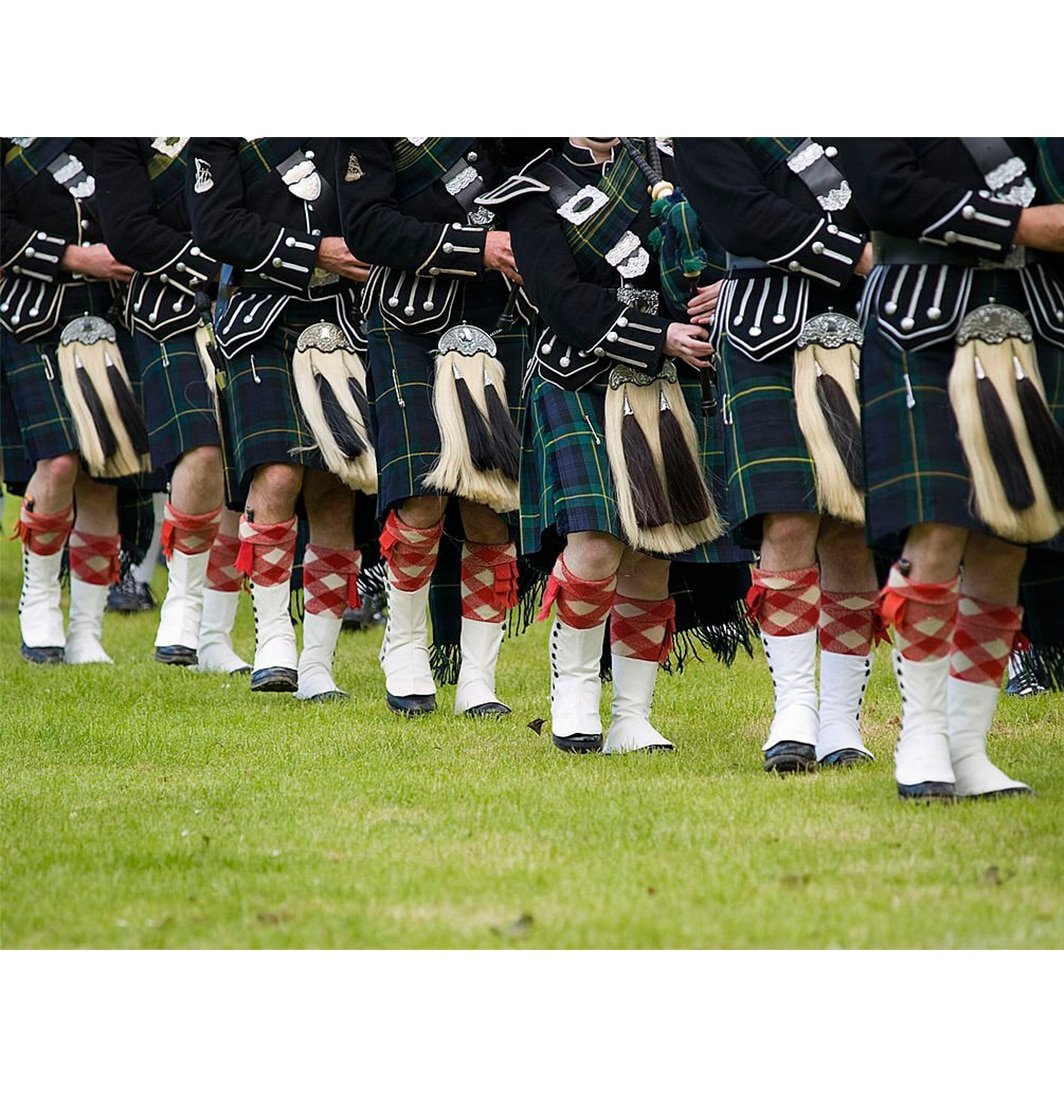
A kilt is a knee-length unbifurcated garment that is closely associated with Scotland and Scottish culture, although similar garments are worn in other parts of the United Kingdom and the world in general. A classic kilt is easy to identify with its tartan, also known as plaid, design, and deep pleats. In Scotland, the garment is treated as formal wear for men, although men may wear them on more casual occasions as well. In the 1990s, various modern adaptations, such as the Utility kilt, began to arise, popularizing this garment for a wider audience.
When you think of Scotland, three things likely come to mind: haggis, bagpipes, and kilts. These are stereotypes, but they unquestionably influence the history and identity of the country. Which one is the most noticeable? The kilt, a mainstay of Highland attire for men, must be the answer. Because it symbolizes his culture and history, a “true Scotsman” wears his kilt with honor and pride. This Scottish fashion staple is still worn today at weddings, christenings, and military parades. How much do you know about the kilt’s past, though? The Kilt: What Is It and all its related topics? In this article, we will talk about the complete history of Scottish kilts.
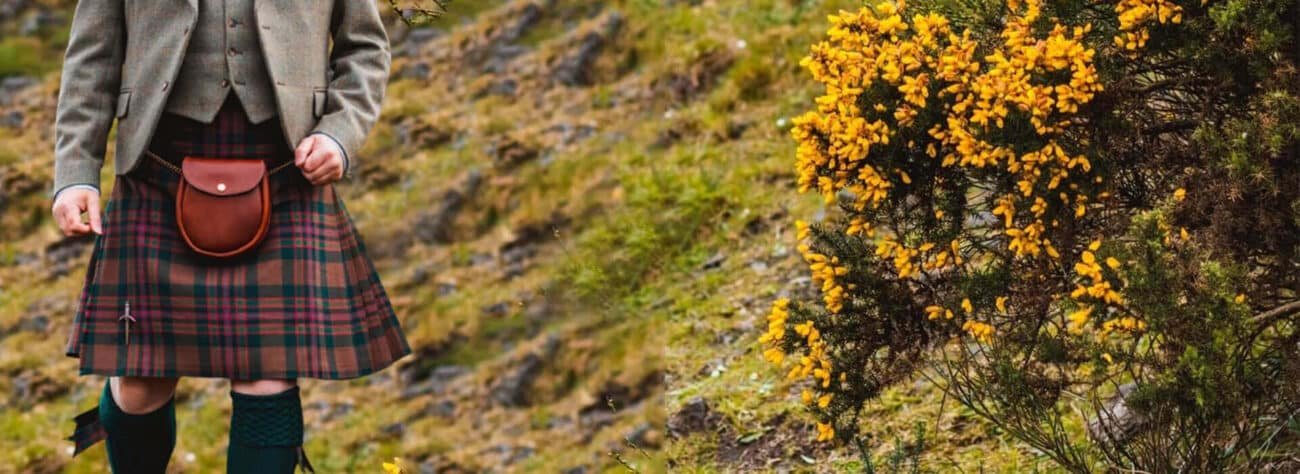
What is a Kilt?
A skirt-like item with pleats at the back first appeared in the Scottish Highlands in the 16th century as the typical attire for men and boys. The kilt has been connected to Scottish and Gaelic cultures since the nineteenth century. Woolen fabric with a tartan design is widely used to make kilts. Typically worn on formal occasions, this Scottish attire is worn by athletes at the Highland Games. Every weekend in the Scottish summer, various islands, towns, villages, and cities host these intense athletics, dancing, and track and field competitions.
History: When did Scots start wearing kilts
The history of the garment is rather complex. It could start with the plaid, a garment that was traditionally wrapped around the waist and thrown over the shoulder by the Celts. Over time, Celtic communities developed their styles and fashions for wearing these garments. Pleated versions were also worn by other Northern European cultures, presumably because they helped the wearers stay warm in inclement weather.
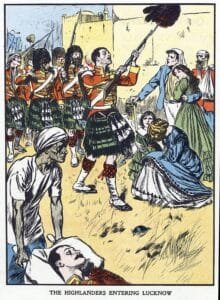
The Scottish national clothing, the kilt, is known the world over. They have strong cultural and historical roots and serve as a symbol of nationalism and patriotism. Kilts are a symbol of Scottish pride that is worn by Scots all over the world. This was only sometimes the case, though.
Kilts were long considered only worn in the Highlands and were generally considered barbarian clothing. Most Scots, known as Lowlanders, regarded this attire as primitive. They detested people who wore it and referred to them as “redshanks.” The name’ kilt’ originates from the Scots term ‘kilt,’ which means to tuck clothing around the body. The Encyclopaedia Britannica claims that the Scots word is Scandinavian and descended from the Ancient Norse word ‘kjalta,’ which means pleated.

The Origin Of The Scottish Kilt
The kilt that you’re seeing in your mind’s eye is very different from the original garments worn by Scots all those centuries ago. Although associated with Celtic culture now, originally the word ‘kilt’ may have come from the Nordic word ‘kjalta’, first recorded back in the 9th century. Early in its history, Scotland was invaded by several countries (including Romans, Vikings, and Scandinavians). ‘Old Norse’ was the original language of the Scandinavians.
These invaders all dressed differently, in a variety of tunics, robes, shirts, and cloaks. It’s not clear exactly how the kilt evolved but it’s believed that it’s a combination of all of these, adjusted to suit the climate and lifestyle of the hardy, warlike inhabitants of the Scottish Highlands.
Who made the kilt First?
The modern kilt is credited to Lancashire Quaker Thomas Rawlinson in a letter published in Edinburgh Magazine. However, it is still being debated. Highlanders were employed by English ironmaster Rawlinson, known as a “man of genius and quick parts,” to work at his furnaces close to Inverness. At first, his employees wore the magnificent kilt. On the other hand, the belted plaid was deemed by Rawlinson to be too “cumbrous and unwieldy” for smelting iron ore and producing charcoal. He created a kilt out of the lower half of the belted plaid to serve as a separate garment with pleats already sewn in, based on efficiency and practicality. The walking kilt, sometimes called the little kilt, was developed.
The MacDonnells of Glengarry chief, Ian MacDonnell and Rawlinson were the only two people to wear the kilt; the clansmen imitated their leader. The skirt-like tartan item gained popularity rapidly. The first known instance of a little kilt with sewn-in pleats, a distinctive characteristic of the modern kilt, may be seen in Rawlinson’s kilt.
Of course, a lot of Scots disagree with the idea that an Englishman created the kilt. There is proof that the kilt was worn before the reign of Rawlinson. For instance, the image of Kenneth Sutherland, 3rd Lord Duffus, depicts the wearing of the walking kilt earlier. However, the origins of the modern kilt remain a topic of debate among historians, with some specialists holding opposing views.
A renowned Scottish historian, Michael Fry, asserts that Lord Dacre’s assertions regarding the kilt “prove absolutely nothing.” Fry asserts that there is proof Tartan was worn in the Middle Ages, but he also dismisses Lord Dacre as a “not-so-reliable guide to Scottish history.” The stories about who created Scotland’s famous symbol vary, as with any historical illustration.

The Dress Act 1746
Not long after the kilt’s creation, the Dress Act of 1746 (also known as the Diskilting Act) made all Highland clothing, including the kilt, illegal. The act was introduced in the wake of the Jacobite Uprising to stifle Highland culture and put warrior clans under government control to avoid the violent battles of the past. The Highland Regiments of the British Army were an exception and were given distinctive tartans to aid in identification.

The penalty for breaking the law was a six-month prison term for a first offense. For their second, they were to be moved for seven years to any of His Majesty’s plantations beyond the sea—Scottish romantics dressed in kilts as a form of protest during the prohibition.
Repealed in 1782
The Highland Society of London’s efforts resulted in the repeal of the Diskilting Act in 1782. At the time, kilts and tartans were less frequently worn in Highland attire, opening the door for new interpretations of Highland Dress. Consequently, a new Highlander persona emerged. They stopped being scary, bare-legged barbarians and started to resemble the “noble savage” in admirable, kilted forms. This idealized portrayal of Scottish Highlanders protests against urbanization and industrialization and celebrates the natural, untamable landscape.
Different Styles of Kilt
The vibrant tartan designs of the kilt are well known. Only some people who wore one throughout history could afford such elaborate design. The attire worn in historical Scotland varied according to the wearer’s affluence. Either plain wool or wool colored in different check tartan designs were used. Many of the first wearers needed more financial means to purchase expensive designs.
After all, this Scottish traditional attire was largely used for practical reasons (as opposed to ceremonial uses as they are now). Here are some more instances: Traditional clothing in its original historical form or its current widespread modernization in Scotland. Irish pipe bands don the Irish kilt, but it’s just one color (solid). Let’s examine the Scottish kilt in more detail.
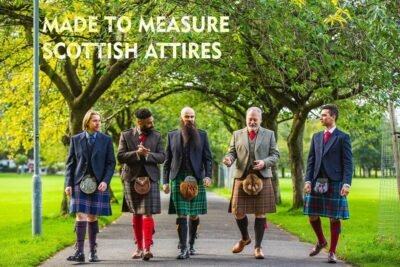
Design
The design, manufacture, and customs of the Scottish kilt are unique. A fitted garment wraps around the wearer’s body from one side (often the wearer’s left), across the front and back, and across the front to the opposing side, starting at the natural waist (between the lowest rib and the hip). This style incorporates the contemporary kilt, frequently seen at formal occasions, military parades, and Highland Games.
Fabric
A traditional Scottish kilt is woven in a twill pattern from worsted wool. There is now a pronounced diagonal weave in the fabric. A certain sett or hue is used to weave the pattern known as tartan. Here’s where we come in. As experts in tartan, we provide three different weights, each with a specific use. Nowadays, a wide range of do-it-yourself crafts and handicrafts can incorporate tartan.
Setts
An authentic Scottish kilt will stand out for its tartan pattern or sett. Since ancient times, some patterns have been connected to particular clans or lineages. Organizations, societies, regions, and counties now have specified tartan patterns. There are sections for individuals, sports, universities, and schools.
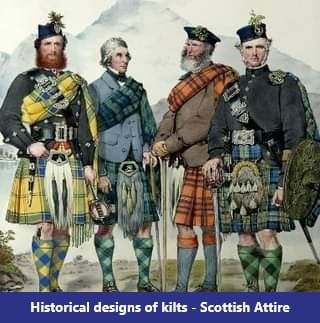
What is worn under a Kilt: what is worn underneath a kilt
Most people believe a “true Scotsman” doesn’t wear anything underneath his kilt. Craig Murray for the Independent writes, “It is very warm and cozy swathed in all that pure wool.” It’s too warm down there. Well, underwear would be sticky. The Scottish Tartans Authority, on the other hand, argues that the practice is “childish and unsanitary” and that “‘going commando’ defies decency.”

